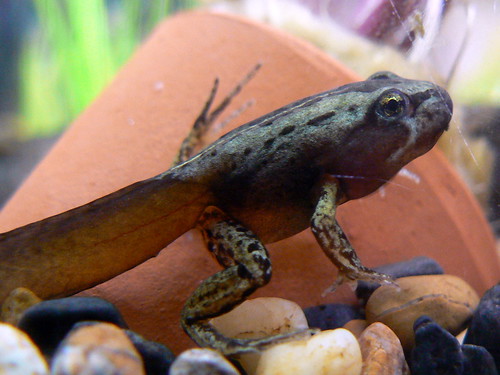So here's the first in a series of occasional posts on what's caught my fancy lately. I hope you find them fascinating too!
I've long admired E.O. Wilson's conception of "biophilia" (see quote on the left side bar for a definition). This idea is developed further in the new field of ecopsychology. This examines the "emotional costs of ecological decline: anxiety, despair, numbness, 'a sense of being overwhelmed or powerless', grief"--the "consequences of dismissing . . . deep-rooted ecological instincts." As one who finds enormous peace, consolation and tranquillity by studying the natural world and pottering in my garden, I am thoroughly familiar with its opposite! It might well help to explain why some people are so committed to environmental pursuits. Article in the New York Times Magazine.
Those of us of a certain age might remember when joints were gentle. Now, they seem to knock people for six, and tales of marijuana-induced psychosis seem to be increasingly common. It emerges there might be a very good reason for this. As the plants have been bred to increase the concentration of delta-9-tetrahydrocannabinol (THC--the chemical that gives the cannabis high), this has been done at the expense of another molecule, cannabidiol (CBD). What's interesting about cannabidiol is that it appears to have an anti-psychotic effect, neutralising the inducement of psychosis from THC. Article in New Scientist. It's yet another argument for the legalisation and regulation of cannabis. Quite apart from decriminalising the behaviour or smokers, removing a significant revenue-stream for organised crime, freeing up prison space and police time, and creating tax income for governments, this would help ensure that commercially available marijuana had the proper balance of THC and CBD, rendering it less harmful.
A few weeks ago, I posted an article on parasitism that alters the behaviour of the host: zombie caterpillars babysitting wasp larvae. Here's another case, just as extraordinary. When affected by a certain common plant virus (the cucumber mosaic virus), plants emit an odour that is particularly attractive to aphids. The aphids arrive and start to feed on the plant, but the taste is now altered to repel them. However, the first bite is enough for the virus to bind chemically to the insects' mouth-parts. The aphids then leave the plant to find another that tastes better, and the virus hitches a ride to find another plant host. A very efficient taxi service! Article in Science Daily.
Finally, plant science meets quantum mechanics. During photosynthesis, plants use photons (light), carbon dioxide and water to produce sugars and oxygen. The process of converting light energy into chemical energy is complex, and to be efficient, the energy of the absorbed light must move in as direct a path as possible to the reaction centre of a thylakoid membrane in a chloroplast. In order to find the fastest channel, recent research shows that the energy of an individual photon actually "splits" by way of quantum coherence, travelling all possible routes through a given protein molecule. Researcher Greg Scholes:
"It is as if you could drive to work via three different routes at the same time, losing no time or energy to traffic delays on any of the given routes."This capacity to move energy quickly over long atomic distances has potential implications for solar light harvesting, offering a promise of vastly more efficient use of sunlight in industry. And plants have been doing it for a few billion years. Article in Scientific American.
And because a blog post with no pretty pictures is no blog post at all, here's a shot I took recently of a tadpole in the process of metamorphosing into a froglet. (I'm pretty sure it's a Spotted Marsh Frog, Limnodynastes tasmaniensis, given the white dorsal stripe.) Cutey, huh? It's now back in the pond where it was spawned.

No comments:
Post a Comment